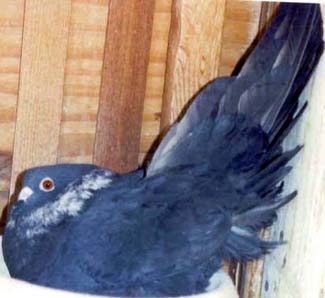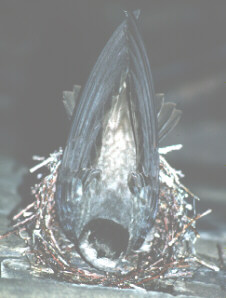Several things have held me back from getting on with the newsletter.
One of the reasons was the typical increase of workload during winter
time in any hospital setting, which had reflected on my schedule. I have
also decided to do some earlier spring preparation in the back yard before
the arrival of visitors as it starts to warm up in May and I will share
some of Southern California's Spring with you in the next letter. However;
the real delay was caused by the major changes in uploading protocols
and new surcharges on Web sites. As some might recall my first site was
on AOL, then I had to move it to Xoom and that was taken over by NBCI.
Then NBC got out of the web site services. Once again I had to pack up
and move. I settled with Yahoo, which in turn under economic pressure
that happened to all .com services had to shut down all their free services
for large web sites. Then limited the activity to upload pictures and
material. Here we go again I had to abandon that site and take a new location
that's still on Yahoo server but this time they added several charges
to their services. For how long would it last? my guess is good as mine!!
Before I go any further I would like you, to please, take note of my e-mail
change from Excite to Yahoo. So it is now:
[email protected]
As I mentioed before Excite has gone through tumultuous changes that deleted
many of my e-mail's before I could even open them. For that reason I have
switched the e-mail on the entire site to Yahoo service.
I hope for the Goodness sake that I have not lost my address book which
is stored on their server with over 100 fanciers. On their behalf, please
accept my apology.
I would also like to make a special apology to the following gentlemen:
Alex Thomas; your order has been received, however the USPS
does not ship to your town any more. Please call me collect at 619-698-1772
to make new arrangement.
George Behnawi; please send me your mailing address once
again. I will mail you the video ASAP. Look forward to seeing you soon,
and please accept my sincere apology.
E-mail; Your generous e-mail has been my guide to the content
of this letter and the next one and don't forget to send your comments
or questions for more material or pictures you wish to share with us in
the future.
An educational article came from Arlene Rosenthal critiquing the
nature of naming the Egyptian Pigeons "Swifts" after the "Chimney
Swifts". Arlene is a writer and an experienced bird watcher and I
can not thank her enough for her time on researching and contributing
to us on the subject.
You might wish to review the Rehani link that led
to her to write the article. Also I am including the link that supplied
this site with the comparison photo as you click on the Chimney Swift
photo..
To aid the subject I have placed two pictures one of a Chimney Swift and
another of a Rehani. Both birds were setting on eggs when the pictures
were taken. Thus, you could come up with your own conclusion as you read
on. Needless to say which picture belongs to what bird!


"When British fanciers first saw these slender black birds (Reehanis) on their perches they could not help but compare them to their native European bird, the Chimney Swift". The above statement would make a bird watcher or an ornithologist cringe because, even though it has been repeated so many times in one form or another in numerous pigeon references through the years that it's become "truth", it most certainly isn't! Worldwide, these are approximately 96 species of Swift, and all of Europe only has six of them: 1) the Needle-Tailed Swift (Hirundapus caudacutus) 2) the Little Swift (Apus affinis) 3) the White-Rumped Swift (Apus caffer) 4) the Alpine Swift (Apus melba) 5) the Pallid Swift (Apus pallidus) 6) the Common Swift (or just plain "Swift") (Apus apus) Additionally, there are four other Swift species which appear in the Paleoarctic with some degree of regularity: the Cape Verde Swift (Apus alexandri), which is virtually restricted to the Cape Verde Islands; the Plain Swift (Apus unicolor), which is normally found only in the Cape Verde and Canary Islands; the Pacific or Fork-Tailed Swift (Apus pacificus), an accidental stray from Asia; and the Palm Swift (Cypsiurus parvus), another accidental stray, this time from tropical West Africa. Of these ten Swift species, the Common Swift has the most extensive range and is the only one normally found on the British Isles where it breeds every year, although some of the others have been known to occur there as rare and occasional strays. The Common Swift once nested on craigs and sea cliffs and in caves, hollow trees and nest holes made by other species, now it largely nests on the ledges of buildings and in their architectural niches. It is not known to have any particular association with chimneys, although it does sometimes utilize them. The species that IS closely associated with chimneys is the aptly named Chimney Swift (Chaetura pelagica), an entirely different Swift species altogether and native only to the New World. It breeds in eastern North America and migrates to South America for the winter, primarily to the Andes of Peru. In the last century it has occurred maybe a grand total of two dozen times on the European side of the Atlantic as an extremely rare vagrant. Whenever this occurred it burned the "rare bird alert" phone lines with the news and brought avid birdwatchers running in droves from hundreds of miles around to admire the once-in-a-lifetime siting. While it once colony-nested almost exclusively within old hollow trees, by now virtually the entire Chimney Swift population prefers nesting in the holes and niches of man-made structures, especially in the depths of chimneys. Therefore, the British pigeon fanciers couldn't have been referencing "their" Chimney Swift simply because they don't have a chimney Swift! Instead, if they were referencing any Swift at all, it had to have been their Common Swift. Whoever it was who first wrote the above nonsense was obviously not an ornithologist or even a birdwatcher.
Swift Management
Points to consider as you start a stud of Swifts
Number of groups to begin with:
This depends on how much energy and time you have. There are around ten
unique groups as you know and some of these groups have sub groups or
classes (refer to standards). It is advisable that you start with fewer
groups and then add on as you secure each group. This would maximize the
opportunity to reach for more traits among the pairs. Compatible birds
should produce around two nests each year during their productive years
with many of the desired traits. Limiting yourself to a fewer groups will
make you focus more keenly as you compare against their standards to weed
out lesser quality birds. There will be less worrying about accidental
mixing as well.
A common mistake that starters do, is getting involved in several groups
of low quality at once, thus leading to a high number of birds without
knowing what to look or cull for and I devote more on this topic next
month as I have good material to share with you..
Personally I would have faired much better, if I concentrated on five
groups or even less. It takes time to develop a good kit that meets the
standards and the personal taste. This is specially true in a flying loft.
Number of birds introduced in each group:
I have imported several birds from each group and my advice for you to
succeed faster is to start by at least three to five birds from each group
or two pairs if possible. You may also start with one pair and add to
their best as you go along.
I keep a compatible pair and keep several good birds from their offspring's
and then introduce new bird, that hopefully will improve my stock. Any
extra birds, which are still good birds, will be either sold or disposed
of to avoid crowding. There is absolutely no guarantee that the new addition
will always give the improvement that we are looking for. It is sad to
say the around 30 to 40% of my imports fits in that category. Compatibility
is a major issue for breeds with many highly selected traits.
Quality of birds being sought:
I could ask you to read material on this site and study the standards,
but unless you are actually breeding and or flying the breed, you are
about to miss many points. I advice beginners to start only by a group
they like best. Should not worry about buying what might be "the
best" until they have a feel for what it takes to produce them.
In summary; Concentrate on fewer groups of your choice with as
many birds in each group.
I have added more pictures on the flowing links:
Standards Masaweds
Standards Otati
Standards Rehani
Standards Reds
Standards Bolk Achdar
Standards Bolk Bondoc
Sale Birds:
As a little reminder, I am offering few excellent breeding pairs
until the first part of July. Need any to start or add new and well selected
gene pool from first and second generation of imported birds, please let
me know as soon as possible.
I wish all of you a prosperous breading season and may the Angel of birds
fill your loft with birds of your dreams!. Thank you for all your contribution
and see you in June.
E-mail | FAQ| Home|
Links | News
Letter | Sale | Standards
| Swift Video